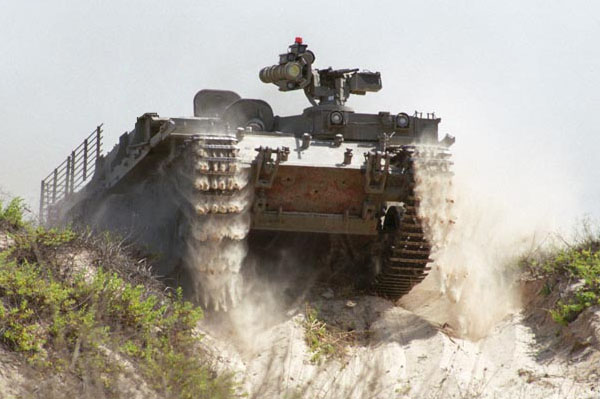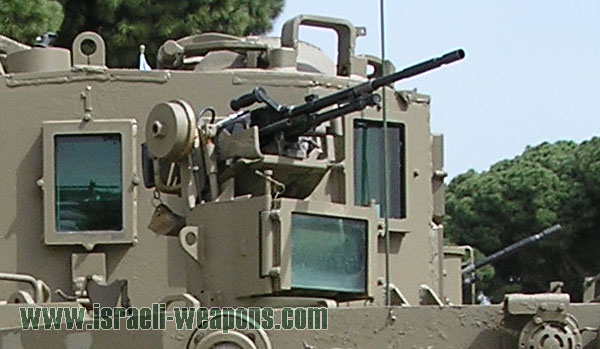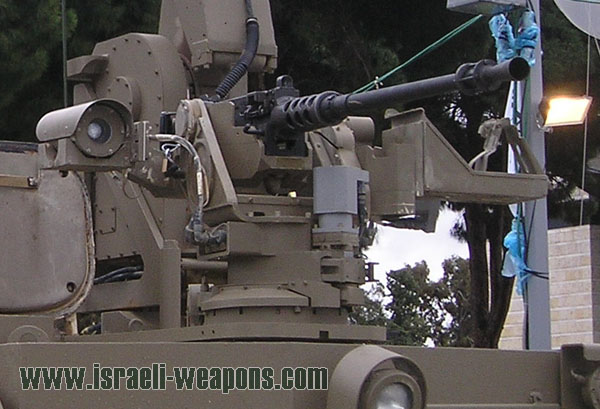توافر للأسرائيليين العديد من غنائم الدبابات العربية ، وبالتالي توفر عندهم الكثير من شاسيهات الدبابات وخاصة الدبابة سنتوريون ... سواء كان ذلك من غنائم حرب 1956 أو 1967 أو 1973 علي الجبهتين المصرية والسورية
فيما يلي ، العدديد من الصور والمواضيع بما في ذلك الشرح الأنجليزي ، عن تطوير ألإسرائيليين لشاسيه الدبابة ، بحيث تواجه مهمات مختلفة .. في الميدان وفي منطقة فلسطين وغزة
د. يحي الشاعر
المصدر ، موقع الصناعات الحربية الأسرائيلية
أولا : طراز بــوما
فيما يلي ، العدديد من الصور والمواضيع بما في ذلك الشرح الأنجليزي ، عن تطوير ألإسرائيليين لشاسيه الدبابة ، بحيث تواجه مهمات مختلفة .. في الميدان وفي منطقة فلسطين وغزة
د. يحي الشاعر
المصدر ، موقع الصناعات الحربية الأسرائيلية
أولا : طراز بــوما
[SIZE=+3]Puma[/SIZE] 










Puma - Combat Engineering Vehicle
[SIZE=+2]Development[/SIZE]
Although the Nagmachon was a step forward compared to the Nagmasho't, it was still a stop gap solution to fielding a satisfactory personnel carrier with enough protection to the crew and mounted soldiers. In the already acquainted way of ‘telescopic development' a further carrier was developed using the Centurion chassis.
The result was a sleeker vehicle with a lower silhouette, in effect reducing the silhouette of the vehicle and therefore increasing its survivability. Survivability was further enhanced by using armor of the third generation, which was denser than the previous kinds of armor used.
The resulting vehicle had a major drawback, however as there was no rear entry or exit for the infantry troops. As a result, the mounted troops had to egress over the roof and the top of the hull, exposing the disembarking troops to enemy fire. The risk of exposing the troops was found to be a very important drawback so much that the vehicle was judged unsuited for the APC (armored personnel carrier) role.
At the same time, IDF's Combat Engineer Force, had a requirement for a heavily protected vehicle to support their frontline tasks. It was decided to adapt the new vehicle to their task. The vehicle was named Puma, which is an acronym for Poretz Mokshim Handasati (minefield break through vehicle).
[SIZE=+2]Description[/SIZE]




As mentioned, the Puma is a derivative of the ubiquitous Sho't, which in itself is a modified British Centurion main battle tank. Like the Nagmasho't and the Nagmachon, the turret was removed and the ammunition storage was removed. This freed up space for a commander, a gunner and at least five mounted troops. The driver's station remained in place.
The resulting opening in the hull was covered by an armored crew/personnel compartment, which, unlike the Nagmasho't and Nagmachon, spans the full width of the vehicle, including the side armor panels, which double as storage compartments for ammunition. There are three openings in the roof, being the hatches for the commander and the gunner and a large hatch for access and egress for the mounted combat engineers/sappers.
[SIZE=+2]Firepower[/SIZE]


The machine gunner operates the RAFAEL Overhead Weapon Station which is armed with a 7.62 mm M240 machine gun.
Like all the IDF's tank based carriers, firepower is optimized for use against enemy infantry. Four 7.62mm FN MAG machine guns are fitted. Three are mounted on simple mounts and the fourth on a Rafael Overhead Weapons Station (OWS). The OWS can be fired remotely from under armour and manually with the gunner exposing his upper body.
The Puma equipped with RAFAEL Overhead Weapon Station which is armed with a 7.62mm M240 machine gun. This can be aimed and fired from within the vehicle in complete safety. Both day and night (image intensification) sights are provided. The OWS can be operated electrically from under armor as well as manually. In the latter case, the gunner has to expose him or herself.
Other fittings to the vehicle include an roof mounted 60 mm Soltam infantry mortar and two IS-6 smoke grenade launchers, capable of carrying six CL-3030 smoke grenades each.
The Puma's survivability is based upon an applique armor suite. This consists of reactive armor side-skirts and latest generation passive armor arrays applied to the glacis and other vulnerable points.
The vehicle in its basic form relies on passive armor only. The glacis plate was up-armored by the addition of armor plates, as was the driver's station.
The suspension is protected by bazooka plates, consisting of eight sections each. The four most forward units are armored with Merkava Mk 3, Magach 6B Gal Batash and Magach 7 type riveted armor. The plates are mounted in a manner which is the same as on the Merkava 2B and up.
For easing troops mounting and dismounting from the vehicle, the Puma is equipped with folding steps, situated on the sides of the vehicle above the fifth road wheel (viewed from the front).
Usually around four mine walking shoes are stored on each side of the vehicle, directly behind the folding steps. These shoes allow for a lower ground pressure per square centimeter, which facilitates the walking through mine field.





















































